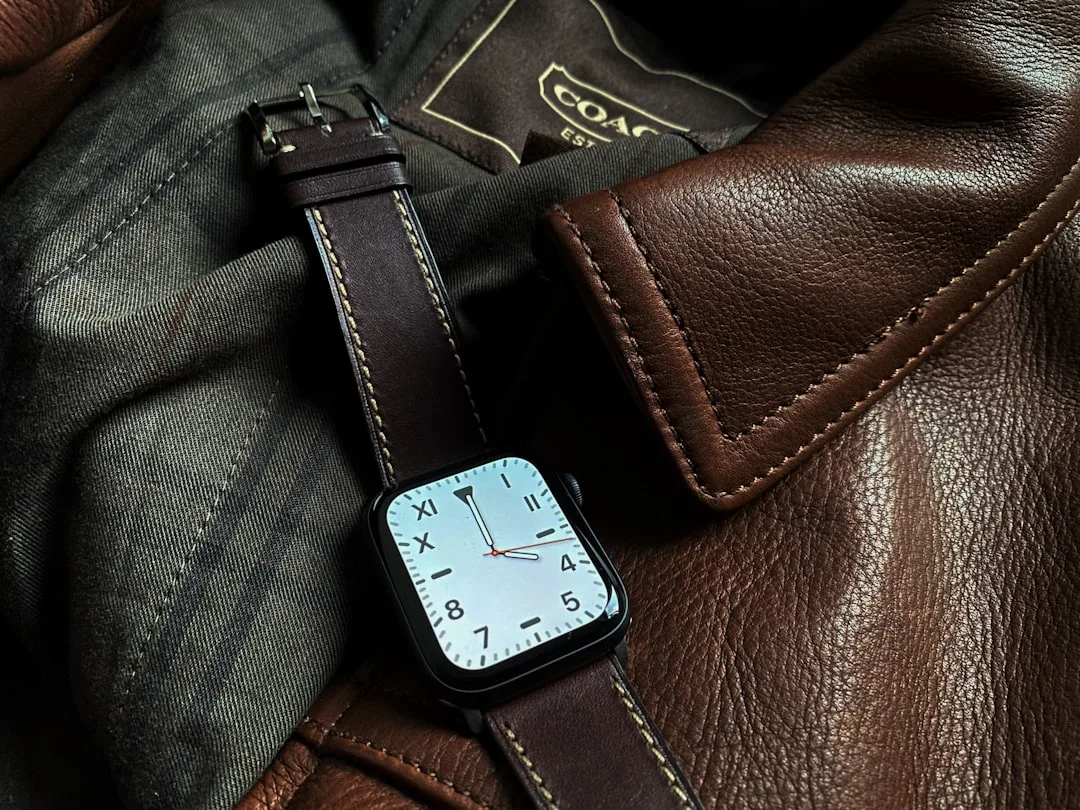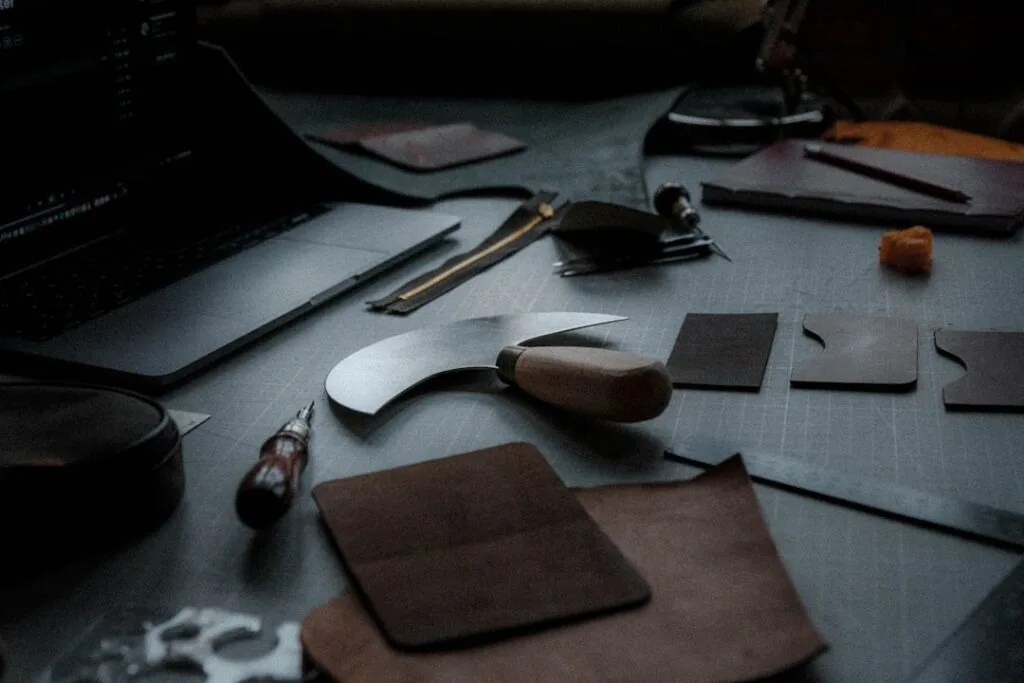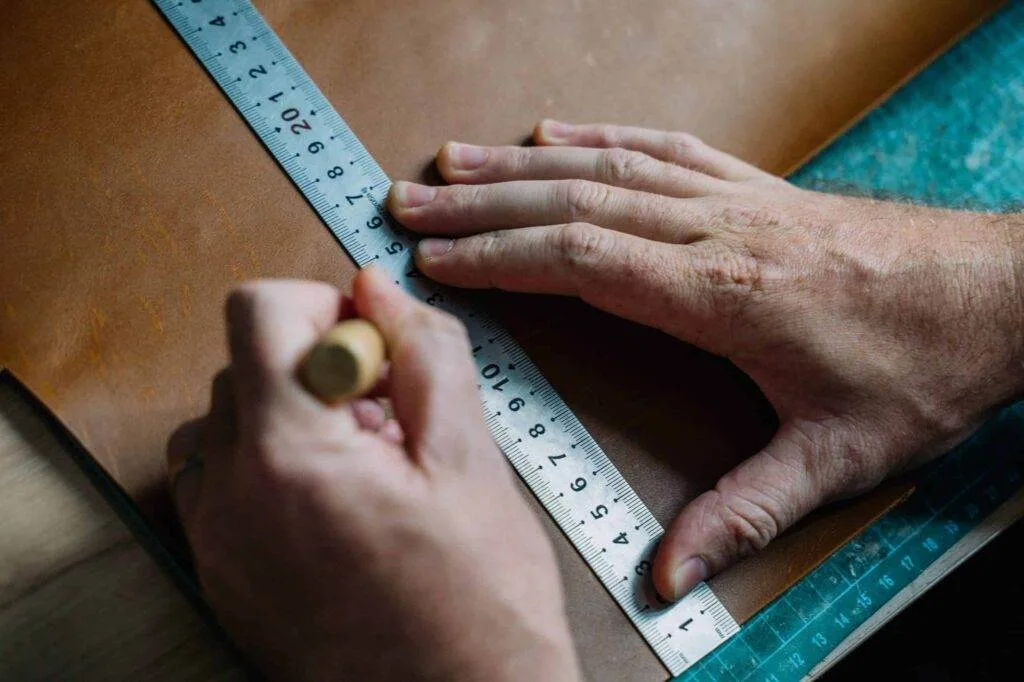Understanding Leather Grain Direction for Leathercraft Cutting
Leather is a versatile and durable material that has been used for centuries in various applications, from clothing to furniture. One of the fundamental aspects of working with leather is understanding its grain direction. The grain refers to the natural texture and pattern found on the surface of the leather, which is determined by the animal’s skin structure.
This grain direction can significantly influence the leather’s appearance, strength, and how it behaves during cutting and crafting. For leatherworkers, recognizing and respecting the grain direction is essential for achieving high-quality results in their projects. The grain direction can be broadly categorized into two types: the “grain side,” which is the outer surface of the leather, and the “flesh side,” which is the inner surface.
The grain side typically exhibits a more refined texture, while the flesh side is softer and more fibrous. Understanding these distinctions is crucial for anyone involved in leathercraft, as it affects not only the aesthetic qualities of the finished product but also its durability and functionality. As we delve deeper into this topic, we will explore how to identify grain direction, its importance in leathercraft, and techniques for cutting leather effectively while considering this critical factor.
Key Takeaways
- Leather grain direction refers to the natural pattern of the leather’s surface, which can affect its strength, flexibility, and appearance.
- Identifying leather grain direction involves examining the surface of the leather for natural markings and patterns that indicate the direction of the grain.
- Understanding leather grain direction is important for ensuring the best results in leathercraft projects, as it can impact the overall quality and durability of the finished product.
- Leather grain direction significantly influences the cutting process in leathercraft, as cutting with or against the grain can result in different outcomes in terms of strength, flexibility, and appearance.
- Techniques for cutting leather with the grain involve following the natural direction of the grain to maximize the leather’s strength and flexibility, while techniques for cutting against the grain involve cutting across the natural direction of the grain for specific design purposes.
Identifying Leather Grain Direction
Identifying the grain direction of leather is a skill that every leatherworker should master. The first step in this process is to observe the surface texture of the leather. The grain side often displays a more pronounced pattern, with variations in texture that can include pores, wrinkles, and natural markings.
In contrast, the flesh side appears smoother and may have a more uniform texture. By running your fingers over both sides, you can often feel a difference in texture that can help you determine which side is the grain side. Another effective method for identifying grain direction involves examining how the leather responds to bending or stretching.
When you flex the leather along the grain direction, it will bend more easily and smoothly compared to bending it against the grain. This characteristic can be particularly useful when working with thicker hides or when preparing to cut intricate shapes. Additionally, some leather types may have a slight sheen on the grain side, which can further aid in identification.
By combining these observational techniques, you can confidently determine the grain direction before proceeding with your leathercraft projects.
Importance of Understanding Leather Grain Direction

Understanding leather grain direction is vital for several reasons. Firstly, it directly impacts the strength and durability of the finished product. Leather cut with the grain tends to be more robust and less prone to tearing or fraying than leather cut against the grain.
This is particularly important for items that will experience significant wear and tear, such as bags, belts, or shoes. By cutting along the grain, you ensure that your creations will withstand daily use and maintain their integrity over time. Moreover, grain direction plays a crucial role in achieving a polished and professional appearance in your leatherwork.
When pieces are cut with respect to the grain, they will align better during assembly, resulting in cleaner seams and edges. This attention to detail not only enhances the aesthetic appeal of your project but also contributes to its overall functionality. For instance, when crafting items like wallets or cases, understanding how to work with the grain can lead to smoother closures and better fit.
Therefore, recognizing and respecting leather grain direction is essential for both durability and visual quality in any leathercraft endeavor.
Impact of Leather Grain Direction on Leathercraft Cutting
The impact of leather grain direction on cutting cannot be overstated. When cutting leather, following the grain direction can significantly affect how cleanly and accurately your cuts are made. Cutting with the grain allows for smoother edges and reduces the likelihood of jagged or uneven cuts that can occur when working against it.
This is particularly important when precision is required, such as when creating intricate designs or patterns. Additionally, cutting against the grain can lead to undesirable outcomes such as curling or warping of the leather edges. This occurs because the fibers are being forced in a direction they are not naturally aligned with, causing stress on the material.
Such issues can compromise not only the appearance but also the structural integrity of your project. Therefore, understanding how grain direction influences cutting techniques is essential for achieving optimal results in any leathercraft project.
Techniques for Cutting Leather with the Grain
When cutting leather with the grain, there are several techniques that can enhance your efficiency and accuracy. One effective method is to use a sharp utility knife or rotary cutter designed specifically for leatherwork. A sharp blade ensures clean cuts without tearing or fraying the edges.
It’s also advisable to use a cutting mat underneath your leather to protect both your work surface and your blade. Another technique involves using a straightedge or ruler as a guide when making cuts. This helps maintain straight lines and ensures that you are following the grain direction accurately.
For more intricate designs, consider using templates or patterns that have been marked with clear grain lines. This approach allows you to visualize how each piece will fit together while ensuring that all cuts are made with respect to the grain direction.
Techniques for Cutting Leather against the Grain

Cutting leather against the grain requires careful consideration and specific techniques to mitigate potential issues that may arise from this approach. One important technique is to use a scoring method before making full cuts. By lightly scoring along your intended cut line with a sharp blade, you can create a guide that helps prevent tearing as you complete the cut.
Additionally, when cutting against the grain, it’s beneficial to work slowly and apply even pressure throughout the cutting process. This helps reduce stress on the fibers and minimizes the risk of jagged edges or warping. Using a heavier weight cutting mat can also provide additional support during this process, helping to stabilize the leather as you cut through it.
Best Practices for Leathercraft Cutting Based on Grain Direction
To achieve optimal results in leathercraft cutting based on grain direction, several best practices should be followed consistently. First and foremost, always take time to identify and mark your grain direction before beginning any cutting process. This simple step can save you from potential mistakes later on in your project.
Moreover, invest in high-quality tools designed specifically for leatherwork. A sharp knife or rotary cutter will make a significant difference in achieving clean cuts along or against the grain. Regularly maintaining your tools by sharpening blades will ensure they perform at their best.
Lastly, practice patience during your cutting process. Rushing through cuts can lead to errors that may compromise your project’s quality. Take your time to measure accurately, follow your marked lines carefully, and adjust your technique as needed based on whether you are cutting with or against the grain.
Conclusion and Final Tips for Leathercraft Cutting with Grain Direction in Mind
In conclusion, understanding leather grain direction is an essential aspect of successful leathercrafting that cannot be overlooked. It influences not only the strength and durability of your projects but also their overall appearance and functionality. By mastering techniques for identifying grain direction and applying best practices during cutting, you can elevate your craftsmanship to new heights.
As you continue to hone your skills in leatherwork, remember that practice makes perfect. Experiment with different types of leather and various cutting techniques to find what works best for you while keeping grain direction in mind. With time and experience, you will develop an intuitive understanding of how to work with leather effectively, leading to beautifully crafted pieces that stand the test of time.
Whether you’re creating custom items or exploring new designs, always prioritize understanding and respecting leather’s natural characteristics for optimal results in your projects.
FAQs
What is leather grain direction?
Leather grain direction refers to the natural pattern of the fibers in a piece of leather. It can be either “grain side out” or “flesh side out” depending on the tanning process and the intended use of the leather.
Why is understanding leather grain direction important for leathercraft cutting?
Understanding leather grain direction is important for leathercraft cutting because it affects the appearance, strength, and durability of the finished leather product. Cutting leather with the grain direction in mind ensures that the final product looks and performs as intended.
How can you determine the grain direction of leather?
You can determine the grain direction of leather by examining the surface of the leather for natural patterns and wrinkles. The grain side will have a smoother and more consistent appearance, while the flesh side will have a rougher texture.
What are the differences between cutting with the grain side out and flesh side out?
Cutting with the grain side out results in a smoother and more uniform appearance, while cutting with the flesh side out can create a more textured and rustic look. Additionally, cutting with the grain side out may provide more strength and durability to the finished product.
Are there any specific leathercraft projects that require cutting with the grain side out or flesh side out?
Yes, certain leathercraft projects may require cutting with the grain side out for a more polished and refined look, while others may benefit from cutting with the flesh side out for a more rugged and natural appearance. The choice depends on the desired aesthetic and functional qualities of the finished product.







